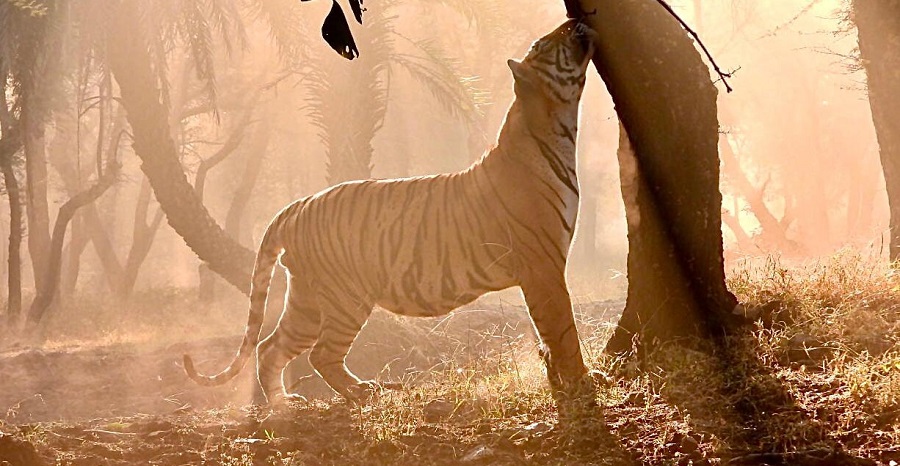In order to augment the tiger population in Sariska, a much-awaited relocation of a tiger from Ranthambore Tiger Reserve to Sariska Tiger Reserve took place on October 16, Sunday. Codenamed T-113, the tiger was trailed for a long time, tranquilized, medically examined, and transferred to Sariska by road.
With T-113 now living in Sariska Tiger Reserve, the reserve now has a total of 25 tigers.
Reasons for Relocating the Tiger
- Allegedly, the majority of big cats in Sariska have aged.
- There were 24 tigers comprising 7 males, 10 females, and 7 cubs.
- Three Tigress ST-10, ST-12, and ST-22 are currently mobile in the northern section of the STR aloof with no male tiger with them.
- Furthermore, tigresses that were previously relocated from Ranthambore National Park i.e. ST-3 and 5 have never given birth to cubs.
- Nine tigers have been moved from RTR to Sariska, excluding the most recent one, but there have been numerous attempts to do so.
- Sariska needs at least one male and two female breeding tigers relocated as part of the solution.
According to the STR field Director, there are 10 females in the STR but half of them have aged and the same is the case with the male tigers. As per the current situation, it is important to relocate at least one male and two female tigers able to breed. NTCA has been contacted, and a proposal has been submitted to the chief wildlife warden as the big cats are important in STR to grow.
The Founder Secretary of STR also added that one of the potential causes behind this could be the disturbance created due to the villages inside the jungle. Also, he said that it was a long-awaited move that after four years big cats are now been relocated to STR to maintain their population. Several states, including Maharashtra and Madhya Pradesh with high tiger populations, are willing to exchange tigers in order to improve their chances of survival and reproduction by diversifying their gene pool.
